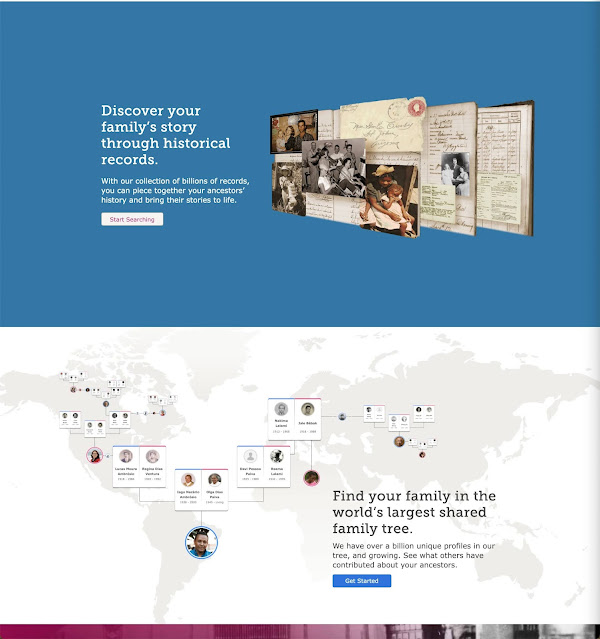The number one all time most common mistake observed in online family trees arises from copying some other person's family tree information especially if the information comes from paper family group sheets or an old GEDCOM file. The fact that you inherited information from a relative, even a grandmother or aunt, does not mean that the information is reliable or accurate.
This brings us immediately to the second most common mistake, entering information without a supporting source citation to a reasonably accurate historical source. Without a cited source for the information, there is no way another person viewing the information can determine if it is correct even if it is correct or you know in your heart that it is correct.
The third most common mistake is closely related to the first two. It is called the "same name = the same person" syndrome. Before you decide to add a person to your family tree, make sure that the information you are adding is consistent with all the existing information. If all the children in a family are born in Arizona in the 1880s and onward, it is highly unlikely that one of the children would have been born in England even if the parents' names agree and the dates somewhat match.
The fourth mistake involves ignoring the first rule of genealogy: When the baby was born, the mother was there. Identifying exact locations is the key to understanding and finding historical records and the further key to maintaining consistent historical genealogical family trees. You need to be cognizant of the modes of travel and intervening mountains, oceans, and other obstacles at the time of the events when you think that children born or christened in different locations.
Number five involves extending a pedigree to a famous person, celebrity, or royalty without doing any research. If you are enamored by the fact that an app on your phone tells you that you are related to George Washington or King George III then you might want to start doing some research. This is especially true because George Washington had no direct descendants and if you are a direct descendant of King George III you probably drive a Rolls Royce sedan and live in a palace somewhere in Europe. The apps are entertaining but in a recent gathering where I ended up being related to several people at least some of them were not really related because I was not related to the common ancestor found by the program.
Number six is more obscure. It involves merging two people who are not the same person. If I merge two people who are not the same person, the results will likely be inaccurate. In the worst case, the resultant person ends up with the wrong parents, wrong spouse, or wrongly added children. Merging is a serious task and should be handled with great care.
Now we are up to number seven. The general rule about places is that the places are designated as they were at the time of the event being recorded. Some people seem to assume that it is OK to record the places as they are today assuming, wrongly, that finding the records will be easier. In fact, without an accurately designated place finding the records may be almost impossible. All genealogical records are generally organized by place and date. So if the place was Mexico in 1830 and is now Arizona in 2021, this does not mean that we can find the records in Arizona. The records will be in Mexico.
Getting close to the end of the list with number eight. Picking the prominent or famous person when there are multiple names the same. Let's suppose, such as is the case with my own family line, that you trace your ancestry back in the 1800s to a place where there are several people with the name John Morgan. You could then conclude that you were related to the rich Morgans who owned the banks or even J. P. Morgan. What makes you think that your desire to have a famous ancestor is more important than doing real research and discovering if it is possible to determine which of the John Morgans you are actually related to. Yes, you might be a relative to the rich one, but you probably are not, or someone would have already made the connection in your family long ago.
This is mistake number nine. It does not really show up as such in the family trees, but it is a mistake that makes much of the research questionable. It involves focusing or fixating on one particular date, event, or person to the exclusion of doing other valuable research. All family lines end. Moving back one more generation from an old end of line can be satisfying but it is usually only accomplished by spending an inordinate amount of time on one person, one date, or one supposedly created document. I suggest spending some time but not fixating. Learn to move on to other more reasonable tasks.
Here we are at number ten. This is more of a matter of careful and systematic work rather than making a single mistake. You need to make sure that all your places are completely identified, all the dates are correctly entered, that what you have in your online family tree agrees with the sources you have attached or cited, and that you observe moderately good grammar and capitalization. All caps went out with typewriters and paper family group sheets. Enter the names as they appear in the earliest record not what the person wanted to be called during his or her life. Don't add nicknames into the name fields. Keep out all types of typographic characters such as parenthesis and quote marks. Clean up your entries.
I hope this helps.























